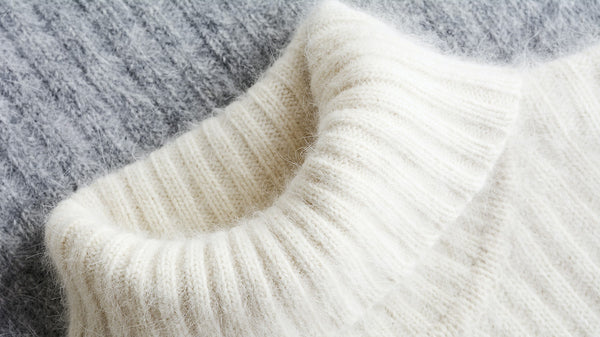Discovering What Material Is Cashmere and Its Role in Premium Clothing
Discovering What Material Is Cashmere and Its Role in Premium Clothing
Blog Article
Exploring the Different Kinds Of Cashmere a Natural Fiber for Ultimate High-end
Cashmere, an all-natural fiber, is typically linked with luxury and convenience. Not all cashmere is developed equivalent. From the richly soft Mongolian range to the light-weight heat of Indian Pashmina, each type provides its very own distinct functions and attraction. The more affordable Chinese cashmere, the conventional Scottish variation, and the premium Italian mix, all inform a different story of this exceptional fiber. As we untangle the globe of cashmere, a much deeper understanding of its true value and elegance begins to emerge.
Understanding the Elegant Nature of Cashmere
Cashmere, usually connected with luxury and convenience, holds a distinct attraction in the world of all-natural fibers. Unlike other all-natural fibers, cashmere combines insulation with breathability, providing unparalleled convenience across varying temperature levels. Its shiny finish and soft structure add to its high-end allure, justifying the costs price that commonly comes with cashmere garments.
Just What Is Cashmere and Where Does It Come From?

Given these outstanding qualities, one may question the beginning and make-up of this elegant fiber. Cashmere is stemmed from the soft undercoat of cashmere goats, primarily found in Mongolia, China, Iran, and Afghanistan - is cashmere a natural fiber. These goats are adjusted to rough climatic conditions, creating an exceptionally fine, soft underfur as a defense against the bitter cold. This underfur, or undercoat, is what is gathered for cashmere. Each springtime, when the goats normally lost their winter coat, farmers comb out the fine underhair, leaving the coarser hair behind. This careful procedure adds to the scarcity and high cost of cashmere. With its origin in the severe landscapes of Asia, cashmere is a testimony to nature's capacity to generate deluxe from adversity.
Translating the Various Sorts Of Cashmere
Comprehending the different sorts of cashmere is essential to appreciating the high quality and unique characteristics of this lavish textile. Generally, cashmere is classified right into 3 types: raw, virgin, and recycled. Raw cashmere is directly obtained from the goat and is unrefined. This kind commonly consists of pollutants such as dirt and coarse hair. Virgin cashmere, on the other hand, is the pure, unrecycled material that is rotated right into thread for the very first time. It is the softest and most elegant. Recycled cashmere is made from virgin product that has actually been previously used. It is re-spun and made use of in creating lower-cost cashmere products. Decoding these kinds is the initial step in recognizing the exclusivity and find more information worth of cashmere.

The One-of-a-kind Characteristics of Each Type of Cashmere
Having discovered the different groups of cashmere, it ends up being apparent that each kind boasts its special set of features. Mongolian cashmere, for instance, is renowned for its premium high quality, due to Mongolia's rough wintertimes that produce longer and site here finer fibers. On the other hand, Chinese cashmere is frequently extra cost effective, though its shorter fibers can minimize resilience.
Why Cashmere Is the Embodiment of Deluxe in Fashion
Cashmere holds a well-regarded position worldwide of style, considered as an icon of luxury and class. Its attraction is not just in its soft qualities and warmth, however additionally in its rarity and the meticulous process associated with its purchase. Cashmere is derived from the fine undercoat of Himalayan goats, recognized for their superior quality fiber. The shortage of this fiber, incorporated with the labor-intensive procedure of collection, adds to its high cost and special standing. Cashmere's click now unmatched comfort and resilience make it a popular product in the development of premium garments. Its all-natural light-weight and shielding homes add to its charm, making it the embodiment of high-end in fashion.
The Refine of Making Cashmere: From Goat to Garment
The journey of cashmere, from being an undercoat of a Himalayan goat to an extravagant garment, is a detailed one. With the development of springtime, farmers in Mongolia and China collect the woollen by combing the goats, ensuring no damage is done. The gotten wool includes coarse external hair and soft downy undercoat. This blend is then painstakingly separated, with only the soft down utilized for cashmere. This raw cashmere is cleaned, dyed and spun right into yarn. The yarn is after that woven or knitted into fabrics. The final action includes washing and pushing to offer the textile its particular softness and warmth. From goat to garment, each action is a testimony to the persistence, creativity and skill involved in crafting cashmere.

Final Thought
In final thought, cashmere, with its all-natural beauty and unmatched convenience, preponderates in the globe of luxury style. The diversity in kinds, varying from the soft Mongolian, lightweight Indian Pashmina, economical Chinese, conventional Scottish, to the colorful Italian, exposes the flexibility of this natural fiber. The scrupulous process of transforming it from a goat to a garment further includes in its exclusivity, making cashmere the epitome of sophistication and luxury.
Cashmere, an all-natural fiber, is frequently associated with high-end and comfort (is cashmere a natural fiber).Cashmere, typically linked with luxury and convenience, holds an unique attraction in the world of natural fibers. Unlike various other natural fibers, cashmere combines insulation with breathability, supplying unrivaled comfort across differing temperature levels. Cashmere is obtained from the soft undercoat of cashmere goats, largely discovered in Mongolia, China, Iran, and Afghanistan. Cashmere is acquired from the fine undercoat of Himalayan goats, recognized for their premium high quality fiber
Report this page